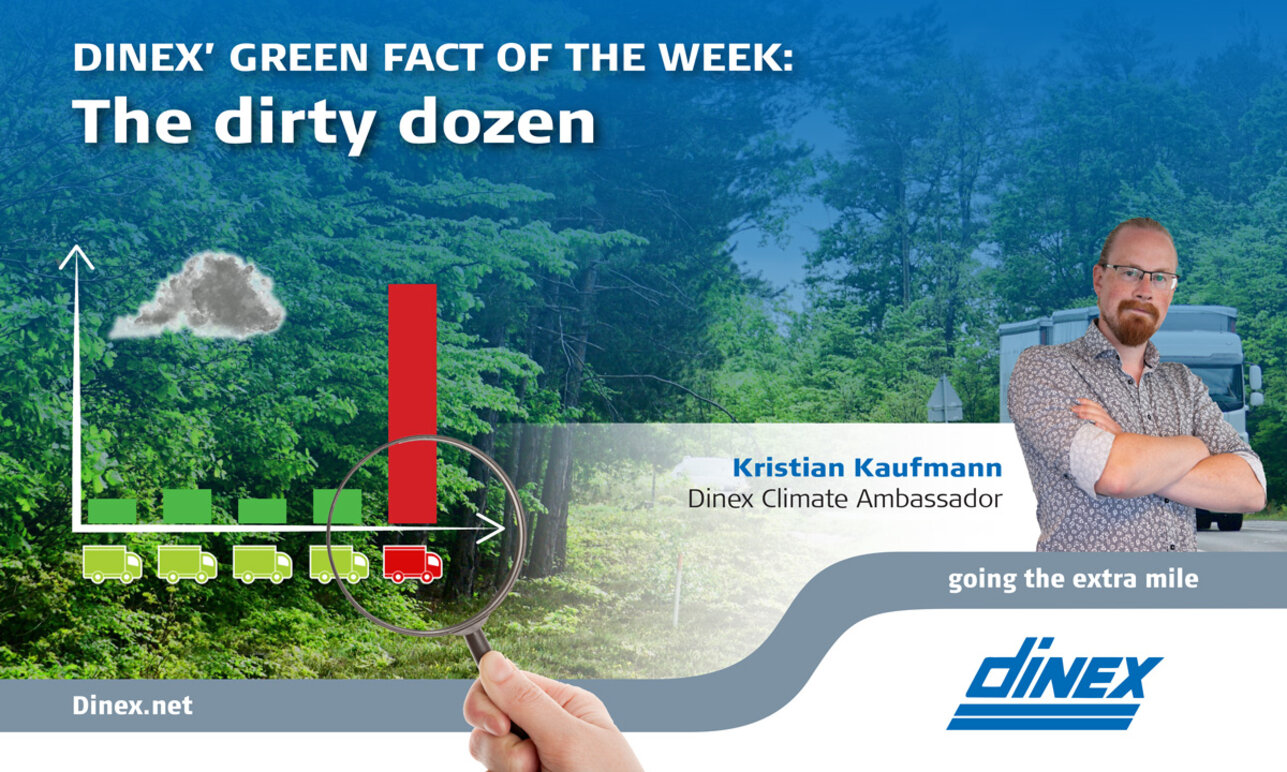- News and Events
- News
- 2021.11, The Dirty Dozen

As previously covered, Diesel vehicles are today clean. Diesel Particulate Filters (DPF) can remove even more ultrafine particles from the air than the engine produces itself, and thanks to SCR-systems, NOX emissions from road transport are dropping by over 90% when Euro VI becomes the dominant part of the vehicle parc. And it’s all validated in the real world, during real traffic, with on-road testing.
Unfortunately, technology sometimes fail because of users either neglecting to react on defects, or by committing a criminal act by tampering with the system, the software – or by using non-type approved spare parts for repairs, or even unauthorized maintenance methods (e.g. water-cleaning of SCR-catalysts). The motive for this is often economic gains and unfair competitive advantages, at the cost of air quality for all citizens in affected areas.
But how big a deal is this?
Luckily malfunctioning or tampered emission systems are rarely seen, but the impact from the few vehicles where it does occur is substantial.
Several studies have shown that a very small portion of vehicles can be categorized as High-Emitters (HEs), meaning they emit significantly higher levels of pollutants than their respective regulatory approval allows – indicating either a malfunctioning or illegally tampered emission system.
| Where | Findings | Source |
|---|---|---|
| Madrid (2017) | 3-5% are HEs, and emits 20% of NOX & 60% PM2.5 | Link |
| Brussels (2020) | 5% are HEs, and emits 90% of PN | Link |
| Denmark (2019) | 10% has either malfunctioning or tampered SCR | Link |
Obviously, in terms of improving our common air quality, the authorities has a big catch in sight if they improve the identification and action taken against those relatively few vehicles.
But are we doing nothing today?
The European Union, and some US States, requires Periodic Testing of all vehicles, but it is up to individual countries and states to determine if NOX and Particulate Emissions are to be subject for testing – which is only very rarely the case.
Roadside inspections and the use of so-called Plume-Chasing (special “sniffing”-vehicles capable of measuring emissions from other vehicles on the road) have increased, making it possible for authorities to identify High-Emitting vehicles. But very often the consequence of being caught is a fine and a call-in for Periodic Testing in the home country.
With the Periodic Testing often being limited to a simple smoke opacity test, and no extraction and verification of On-Board-Diagnostics, or check of type approval of parts, inspectors will have a very little chance of detecting and proving that an emission control system is either defect or illegally tampered with. Especially for Euro VI vehicles where software plays an increasing role in the tampering mechanisms used.
This means the risk of continuously operating a vehicle with a defect or tampered emission control system is relatively small, compared to the costs of repairing or maintaining a fully functional system.
3 suggestions for further actions
Focusing on enforcement of already existing legislation and giving the authorities the right tools to do so, are the prime keywords in all proposals for taking further actions against High Emitters.
Technology has advanced significantly both in the field remotely and stationarily detecting suspiciously high levels of emissions from vehicles in operation, which gives authorities several new ways of taking action against malfunctioning or tampered emission systems. But it calls for a revision of both roadside and periodic inspection rules and guidelines – and to meet the challenges of cross-border transport: A much better alignment between states
To summarize into 3 proposals from our side:
- Tougher and more aligned enforcement between member states against sales of manipulation units and ECU re-programming services, to reduce the availability of deliberate tampering methods
- Upgrade and alignment of acceptance criteria for Periodic Testing between member states, including NOX, PN, OBD and ECU inspection, and type approval verification of parts, to ensure action is taken against identified High-Emitters.
- More widespread roadside inspection and plume-chasing, supported by aligned guidelines and policies between states for identification of High-Emitters while in operation.
Dinex' Green Fact of the Week is the title of a series of blog posts by Dinex Climate Ambassador Kristian Kaufmann. The purpose is to use facts and technical arguments to promote the most pragmatic and effective solutions to further reduce the transport industry's climate and environmental impact - for an even cleaner and greener future.